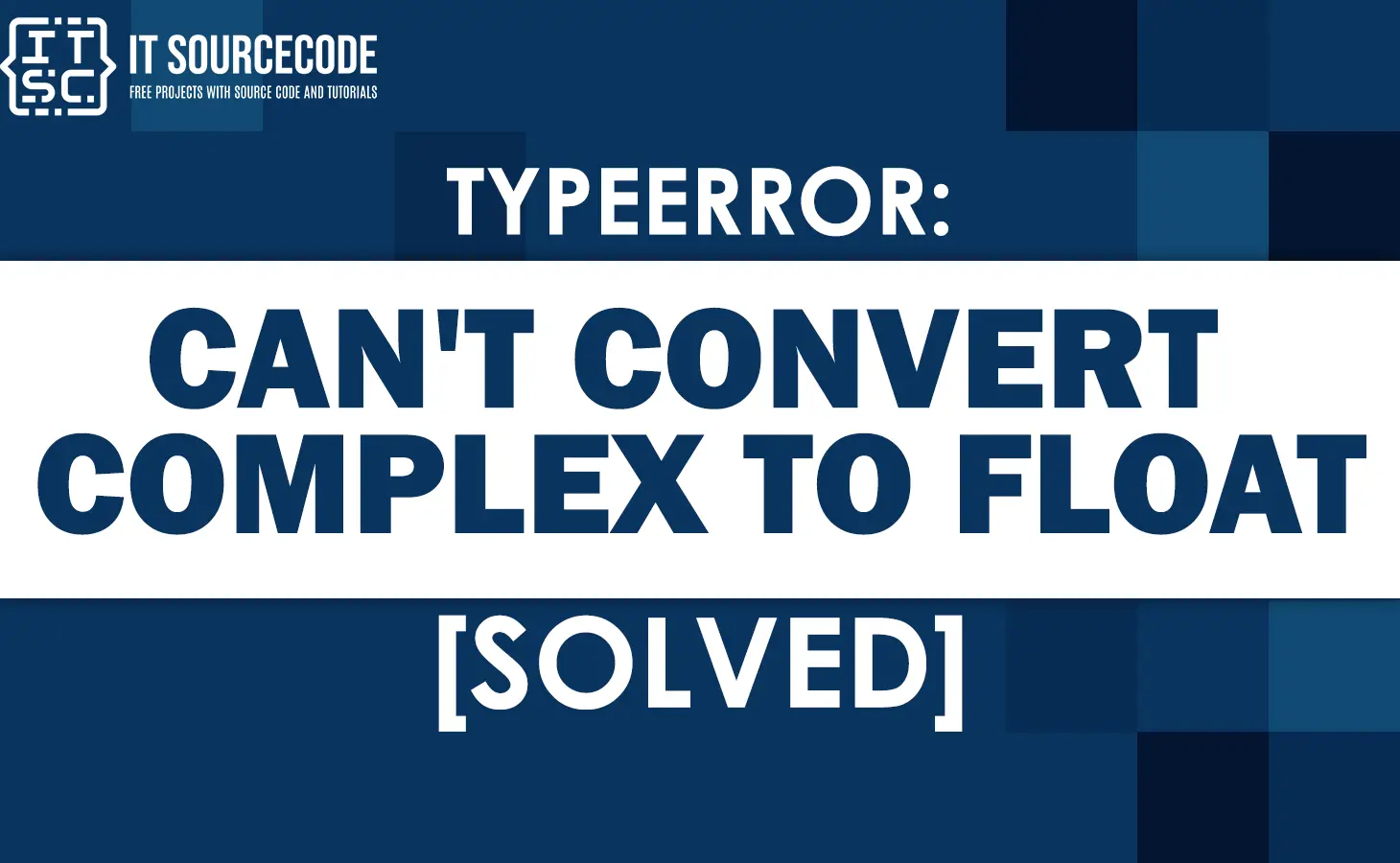In this article, we will discuss the possible causes of “TypeError: can’t convert complex to float”, and provide solutions to resolve the error.
A “TypeError: can’t convert complex to float” is a common error that occurs when working with complex numbers in Python. This error occurs when you try to perform a mathematical operation that expects a float but receives a complex number instead.
So first let’s discuss further what is a Typeerror: can’t convert complex to float.
What is Typeerror: can’t convert complex to float?
The error message “TypeError: can’t convert complex to float” indicates that you are trying to perform an operation that requires a real number (a float) on a complex number.
A complex number is a number that has a real part and an imaginary part and is represented as a + bj, where a is the real part and b is the imaginary part, and j is the imaginary unit.
If you try to convert a complex number to a float using a function or method that expects a real number, such as float(), you will get this error.
now let us know why this Typeerror occurs.
Causes of Typeerror: can’t convert complex to float
The common reason for the “TypeError: can’t convert complex to float” occurs is when you try to perform a mathematical operation that expects a float input on a complex number.
Here’s an example code that produces the error:
complex_num = 3 + 4j
float_num = float(complex_num)In this code, you are trying to convert a complex number to a float using the float() function. Since a complex number cannot be represented as a float, Python raises the:
TypeError: can't convert complex to floatHere are the other reasons that cause of TypeError: can’t convert complex to float:
- Trying to take the square root of a negative number:
import math
x = -5
y = math.sqrt(x) In this case, the error is not specifically related to complex numbers, but it is an example of how certain mathematical operations can result in errors.
- Attempting to use the log function from the math library with a complex number:
import math z = 2 + 3j log_z = math.log(z)
Here, the error occurs because the math library’s log function only works with real numbers and not complex numbers.
- Attempting to convert a complex number to a float using the float function:
z = 2 + 3j
z_float = float(z)
In this case, the error occurs because a complex number cannot be converted to a float since a complex number has both real and imaginary parts.
Now let’s fix this Typeerror.
How to fix Typeerror: can’t convert complex to float
To fix this Typeerror you make sure to use the appropriate data type for the operation you are performing. If you need to perform mathematical operations on complex numbers, use functions and operations that are specifically designed for complex numbers.
Here are the alternative solutions to fix this Typeerror:
- Use the cmath module:
Use the cmath module instead of the math module when working with complex numbers.
Here’s an example:
import cmath x = complex(2, 3) y = cmath.sqrt(x)
In this code, we import the cmath module and use the cmath.sqrt() function to take the square root of the complex number x. This function is specifically designed to work with complex numbers and will not trigger the TypeError.
- Use the numpy module:
The numpy module is a popular library for scientific computing in Python. It provides many functions for working with complex numbers.
Here’s an example:
import numpy as np x = np.complex(2, 3) y = np.sqrt(x)
In this code, we import the numpy module and use the np.complex() function to create a complex number x. Then we use the np.sqrt() function to take the square root of x. This function is designed to work with both real and complex numbers, so it will not trigger the TypeError.
- Use the real and imag attributes:
To extract the real and imaginary parts of a complex number, you can use the real and imag attributes.
Here’s an example:
goCopy codex = complex(2, 3)
y = x.real
z = x.imag
In this code, we create a complex number x. Then we use the real attribute to extract the real part of x and assign it to the variable y, and the imag attribute to extract the imaginary part of x and assign it to the variable z. These attributes return floats, so they will not trigger the “TypeError: can’t convert complex to float” error.
Conclusion
In conclusion, the article “Typeerror: can’t convert complex to float “ is an error message that occurs when you are trying to perform an operation that requires a real number (a float) on a complex number.
By following the given solution, surely you can fix the error quickly and proceed to your coding project again.
If you have any questions or suggestions, please leave a comment below. For more attributeerror tutorials in Python, visit our website.

